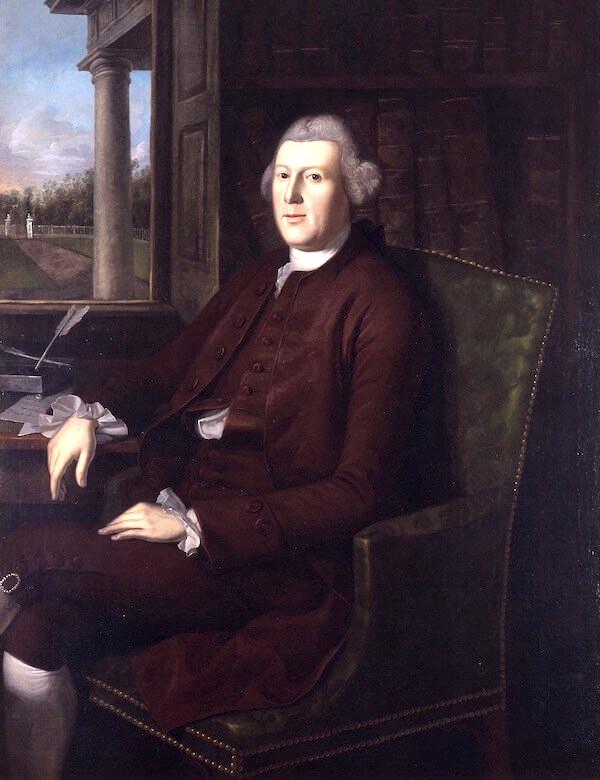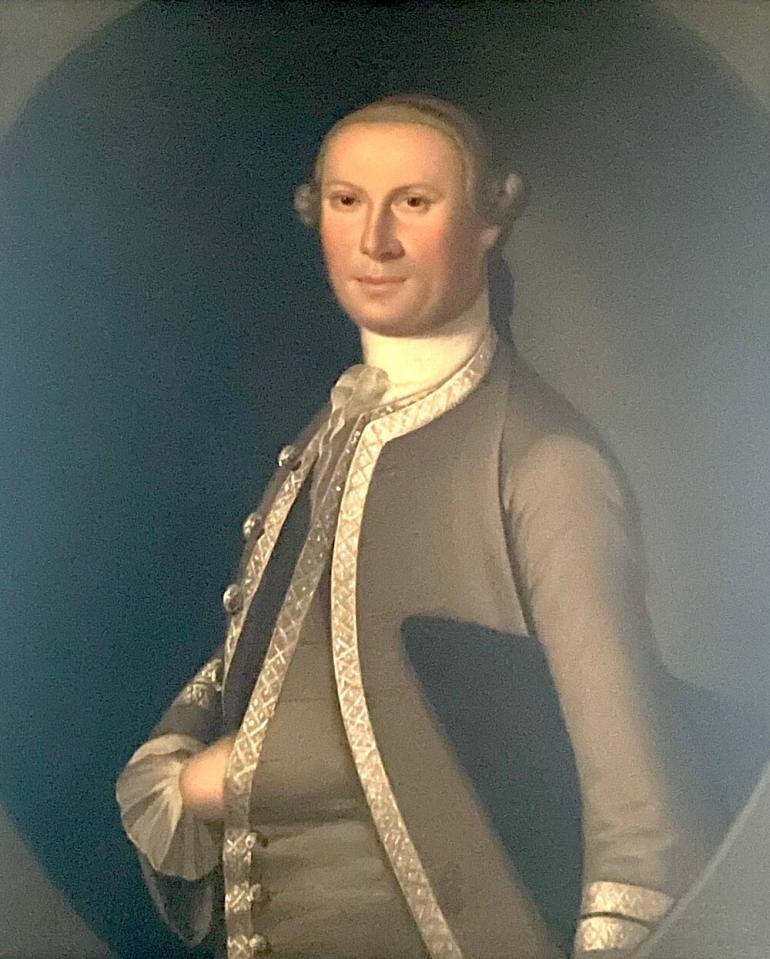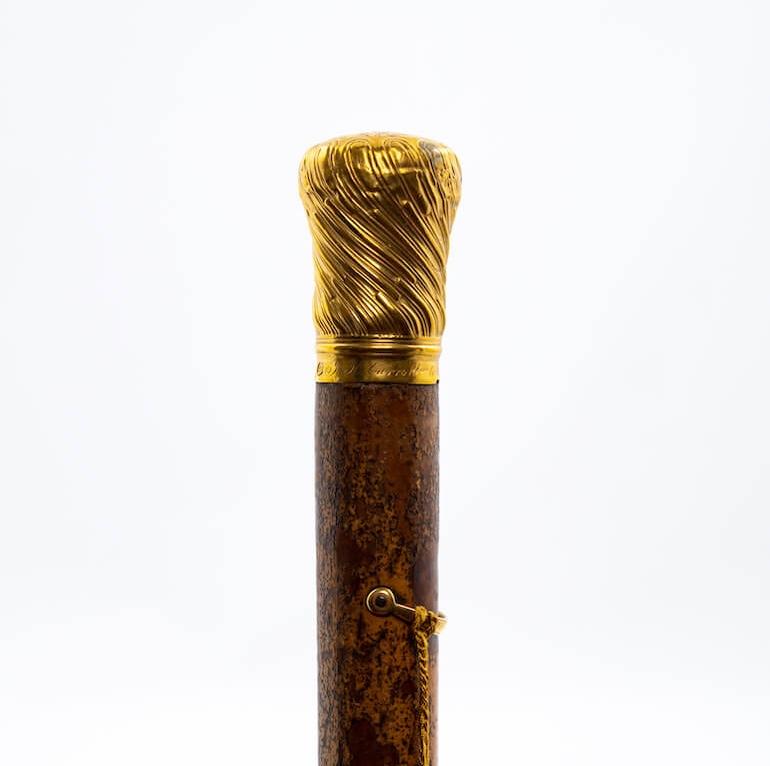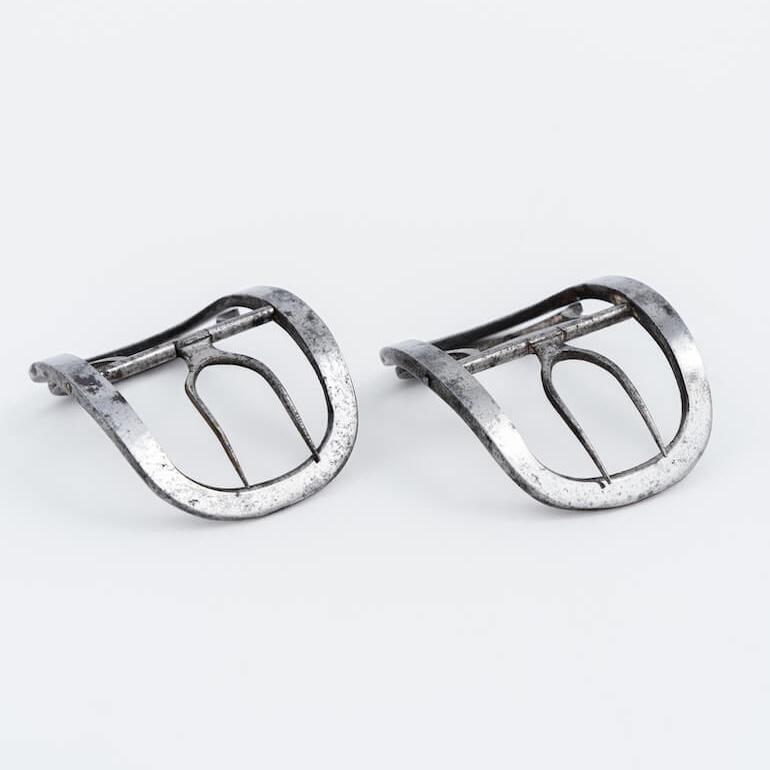Charles, the eldest son of Dr. Charles Carroll and Dorothy Blake, was born in 1723 in Annapolis. He was educated at a Catholic English school in Portugal, then after his father renounced his Catholic faith, he was able to attend Eton and Cambridge University in England. He spent four years in Annapolis helping his father manage their business, then returned to England to study law at Middle Temple, Garden Court.
Three months after returning home, Dr. Carroll died, leaving Charles his sole heir. From 1756-1760, Charles Carroll, built Mount Clare. On June 23, 1763, the 40-year-old Carroll married his 21-year-old cousin Margaret Tilghman, from an eminent Eastern Shore family. To distinguish himself from the several other Charles Carrolls living in Annapolis at that time, he chose to be identified as a Barrister.
"There are so many of the name in this Town that some Particular Distinction is necessary to Prevent mistakes please therefore to Direct to me Councellor (sic) or Barrister at Law."
Charles Carroll, Barrister, writing to wine merchants in Madeira, Portugal, in 1766.
He was interested in agriculture, hunting, horse breeding and racing. In 1766, he joined several Annapolis businessmen in sponsoring a young saddlemaker named Charles Willson Peale to study painting in England. Peale went on to become a famous portrait painter. The Barrister served as a vestryman at St. Anne’s Parish in Anne Arundel County and St. Paul’s Parish in Baltimore County.
Catholics were barred from holding political office at that time, but as a Protestant like his father, the Barrister was able to take over his father’s seat, representing Anne Arundel in the General Assembly (1756-1761). He was a Conservative member of the Country Party, favoring peaceful protests and voluntary boycotts against British economic policy while continuing to import wine, food, and clothing from England until the war began.
He is credited with writing Maryland’s first state constitution and declaration of independence after being elected to all nine of Maryland’s Constitutional Conventions (1774-1776). When the convention voted to expel the British Governor from Annapolis, Charles delivered the message and then hosted the Governor and his wife at Mount Clare until they sailed for England in June 1776.
During the War, the Barrister became an ardent Patriot and assisted his father-in-law, Mathew Tilghman, who was at the forefront of Maryland’s political revolution. The Barrister served along with Tilghman, who headed the Maryland delegation, to several federal Continental Congresses. The Barrister also served on Maryland’s Council of Safety, which was chaired by Tilghman, and which managed the colony’s resistance during the war. When Lafayette marched his troops through Baltimore on their way to the Battle of Yorktown, the Barrister arranged a loan with other area businessmen to purchase food for the troops. Like his father-in-law, Carroll served as one of Maryland’s first state senators from 1776 – 1783. He was also appointed Judge of the General Court in 1777 but chose not to serve.
He died in 1783, one day after his 60th birthday. With no heirs, he left his estate to two nephews, Nicholas and James Maccubbin, after they agreed to take his last name.




